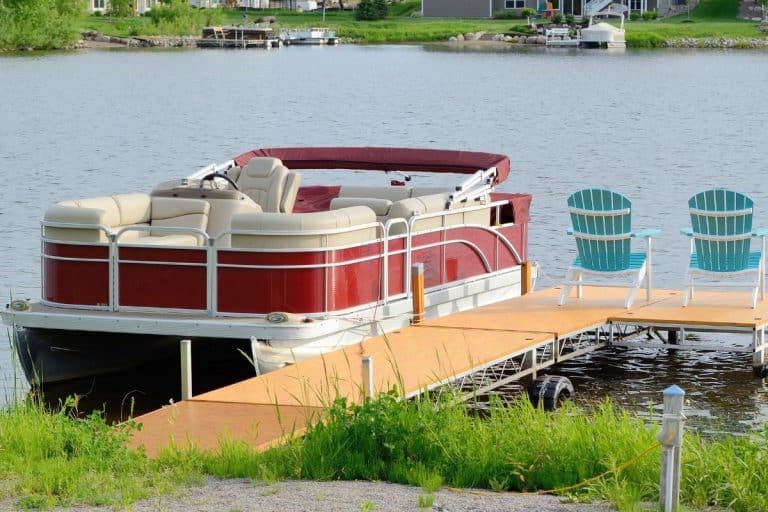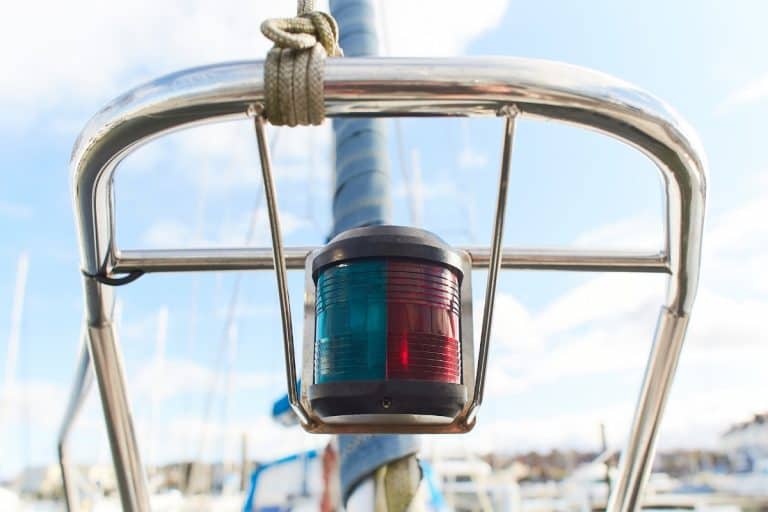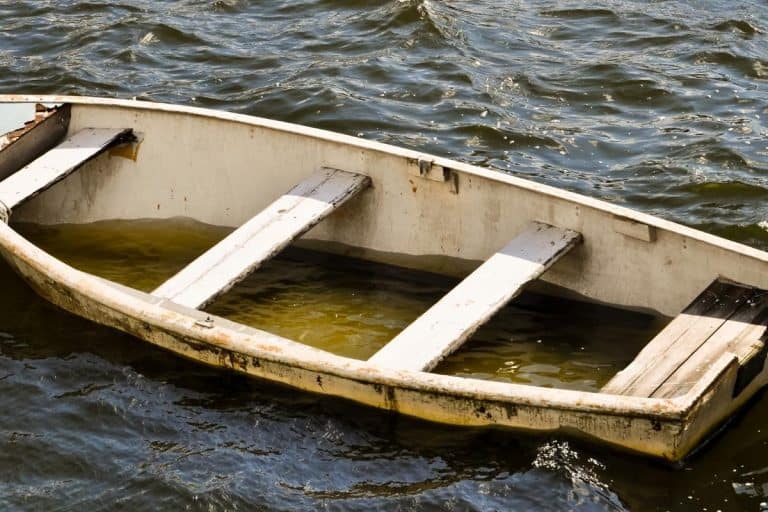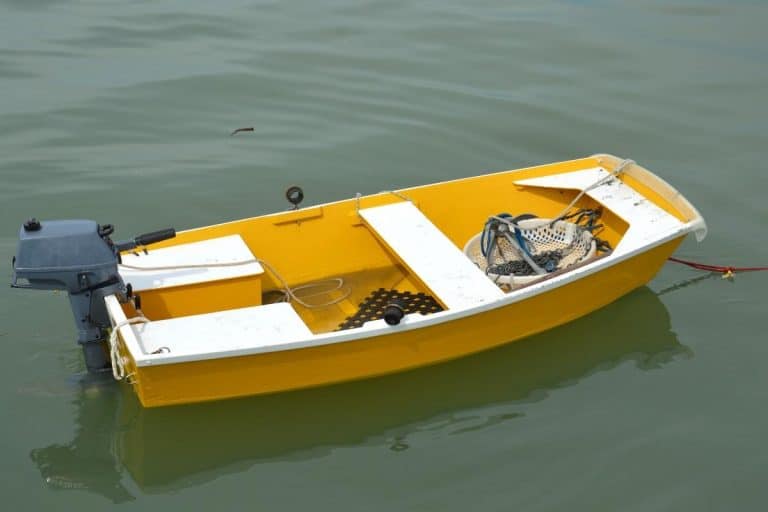What Is Underskinning on a Pontoon Boat?

You’re interested in enhancing the performance of your pontoon boat, and you’ve been contemplating a few different options. A fellow pontooning buddy suggested you try underskinning your boat. What is underskinning, and can it really help? I did some research to provide you more information.
What is underskinning on a pontoon boat? Underskinning a pontoon boat is the installation of aluminum sheeting underneath your boat. This modification comes with several benefits, among them making your ride smoother, boosting speed, lessening water spray, reducing drag, and safeguarding the underside of your boat.
In this post, I’ll tell you everything you need to know about underskinning, both the pros and cons. By the time you’re done reading, you can decide whether underskinning your pontoon boat is the right choice for you. You’re not going to want to miss it!
What Is Underskinning a Pontoon Boat? What You Need to Know
First, let’s begin by elaborating more on the definition of underskinning I discussed in the intro.
To underskin your pontoon boat is to modify it for better speed and performance. The process entails installing sheets beneath your pontoon boat.
The selection of the sheeting material is important, as heavier materials will only serve to worsen your pontoon boat’s performance. On that note then, wood underskinning is never recommended.
Wood shouldn’t get wet for prolonged periods or it becomes unstable and prone to warping and rotting. It’s also heavy. Most pontoon boat owners who decide to get their boat underskinned will use a type of metal for the job.
Steel might seem like an obvious choice, but like wood, it’s heavy. That’s why aluminum has become the most common underskinning material. Even still, you want to shy away from thicker aluminum, as it too is problematic like heavier steel.
Instead, ensure the aluminum sheets are at least 0.065 inches thick apiece. At this weight, the aluminum sheets will be beneficial for your objectives without weighing down the pontoon boat.
What Are the Benefits of Underskinning a Pontoon Boat?
Why underskin your pontoon boat? Here are the benefits you may enjoy.
Smoother Travels
All the rivets, bars, and studs beneath your pontoon boat don’t exactly inspire the smoothest performance on the water. That’s not to say you’ll have a jerky ride, but it could be smoother.
Underskinning and the seamless pieces of aluminum sheeting it requires can create that smooth surface beneath your boat. Although the improvements won’t be overwhelming, your pontoon boat will glide across the water more like butter.
Enhanced Speed
I’ve discussed underskinning on the blog before in relation to increasing the speed of your pontoon boat. That’s arguably the most popular reason that boat owners get their pontoons underskinned, for more speed.
On its own, you won’t see huge speed benefits from underskinning. On average, you should expect to speed up your pontoon performance by about 2 miles per hour, which is hardly earth-shattering.
That said, by combining underskinning and other measures for more speed, such as not filling your gas tank all the way, trimming the engine, and redistributing weight, you might get more out of your pontoon boat than you’d expect.
Less Water Spray and Drag
Everything underneath your pontoon boat detracts from speed and smoothness, yes, but the rivets and studs can also contribute to spraying more water as you traverse the seas in your boat.
Water spray is unfortunate from a variety of angles. Your boat certainly isn’t going its fastest when it’s spraying water this way and that, so you’re losing speed.
Also, you’re making a mess. If you have a wooden deck on your pontoon boat that you want to keep relatively dry, then controlling water spray is a paramount concern. You can reduce the spray through underskinning.
With less water spray also comes less drag so your pontoon boat isn’t actively being slowed down.
Extra Protection
Another convincing reason to get your pontoon boat underskinned is for the protection factor the aluminum sheeting offers. You’re covering the studs, rivets, and other components of the boat’s underside from direct exposure. This could increase their lifespan.
It’s also harder for debris like barnacles to settle onto a smooth surface like underskinned aluminum. This will keep your boat cleaner so you have to spend less time on maintenance.
How Much Does Underskinning a Pontoon Boat Cost?
By this point, your interest in pontoon boat underskinning is probably at its peak. You’re now curious how much it would cost for this boat modification.
Your project cost depends on a few factors, such as the materials used and how much underskinning you need. You should expect to pay at least $500, although it’s very possible the costs may be less. For example, on the Pontoon Boat Forum, one user who underskinned their pontoon boat paid around $300 for theirs.
A modification like this isn’t about reducing the price, though. You want to use high-quality materials and ensure the job gets done right so you can reap the above benefits to the fullest.
Can You Underskin Your Pontoon Boat Yourself?
Yes, underskinning your own pontoon boat is a task you can do yourself. While you can definitely find plenty of professionals to underskin your boat for a fair price, it’s something you can spend some time researching and with some cash and freetime do it all yourself.
Here are the steps to follow to ensure your project goes right.
Step 1: Gauge What You Need
To begin, I recommend taking your pontoon boat out of the water and raising her up with a lift so you can see underneath. You need measuring tape to determine how much underskinning material you’ll need by length and width. Double-check your measurements, as you want them as precise as possible.
Step 2: Obtain Your Materials
Next, you need to get the materials for the project. To reiterate, auminum is your best choice, but not just any aluminum. You need marine-grade aluminum or the metal will eventually rust and/or corrode when exposed to the water. Remember also that the metal must be thin, about 0.065 inches.
Once you get your sheet metal, the next important part is buying fasteners. The fasteners attach your underskinning to your pontoon boat crossbeams, so they must be secure. Low-carbon steel fasteners won’t corrode, nor will they interact with the aluminum electrochemically, which you can’t say of all fastener materials.
To secure your fasteners, marine-grade rubber washers and self-tapping screws made of stainless steel will make your whole setup durable. Even if you were to ride your pontoon boat in the ocean, the saltwater wouldn’t degrade your underskinning or its setup.
Step 3: Cut Your Metal Sheets
You may choose to buy smaller aluminum sheets or get a single piece. Either way, you can slice and dice your aluminum to the desired size or you can visit a metalworker and get the aluminum cut professionally.
Do make sure that you accommodate for your boat’s pontoon tubes when sizing a single piece of aluminum sheeting, leaving a space of at least half an inch from each tube.
Is there any advantage to using one aluminum sheet over smaller pieces and vice-versa? A more seamless piece of aluminum will be better at creating the smooth ride you want, although you’ll still enjoy the benefits to an extent with smaller aluminum pieces. Besides, sometimes using multiple metal sheets may be your only option, such as if you own a really big pontoon boat and even the largest sheets of metal aren’t enough to provide adequate coverage.
Step 4: Attach Your Sheets to the Boat
The last step is the most important, and that’s fastening your aluminum underskinning to your pontoon boat. If you’re using smaller sheets of metal, begin at the back of your pontoon and work your way to the front. Create a sense of seamlessness by putting the sheets atop each other 2 inches apart, especially at your boat’s crossbeams.
Some pontoon boat owners have reported that with bigger crossbeams, the aluminum sheets have gotten kind of baggy in the center after a few uses. You can fix this. At each crossbeam, install a spacer and then hammer in your self-tapping screws to secure these underskinning sheets.
If you’re using a large sheet for underskinning, you may need a second or even a third person to make installation go more smoothly.
Should You Underskin Your Pontoon Boat? How to Decide
You’re pretty well-acquainted with pontoon boat underskinning. Now it’s time to answer a question, and that’s should you underskin your pontoon boat?
Underskinning is advantageous in a variety of ways. It creates a smoother surface beneath your boat so water can’t splash and barnacles can’t get as good of a grip. You won’t have as much drag as you ride your pontoon boat, and the experience may be nice and smooth, just like you always wanted.
Also, purchasing the sheeting necessary for underskinning your pontoon boat won’t cost you an arm and a leg, and installing the aluminum sheets DIY style isn’t terribly difficult. You just need high-quality materials above all else.
If you’re thinking that you’ll get huge bursts of speed by underskinning your pontoon boat, that’s simply not going to happen. Remember, you’ll see speed increases of about 2 MPH, which is so little that you might not even notice it.
If you’re truly after speed, then your best bet is to consider upgrading your pontoon boat to a tritoon, as some tritoon models can reach speeds of 50 MPH max.
As innocuous as underskinning is, at the end of the day, you have to remember that you are indeed modifying your pontoon boat. If your boat is currently covered under warranty, underskinning it would more than likely void that warranty. That means it’s then on you to pay for any problems that might befall your pontoon boat.
You might not mind voiding the warranty, and in that case, I’d say underskin your pontoon boat if you want to. If your boat and warranty are both brand new though, then you have a lot of thinking to do about whether underskinning is a good idea.
Underskinning your pontoon boat involves installing marine-grade aluminum sheeting beneath the boat. The aluminum cuts drag, lessens water splashing, and gives you an ever-so-slight speed boost. It’s not too hard nor expensive to underskin your pontoon boat yourself, but you’ll probably be breaking your warranty if you do.
I hope this guide helps you decide whether getting your pontoon boat underskinned is a good decision. Best of luck!





